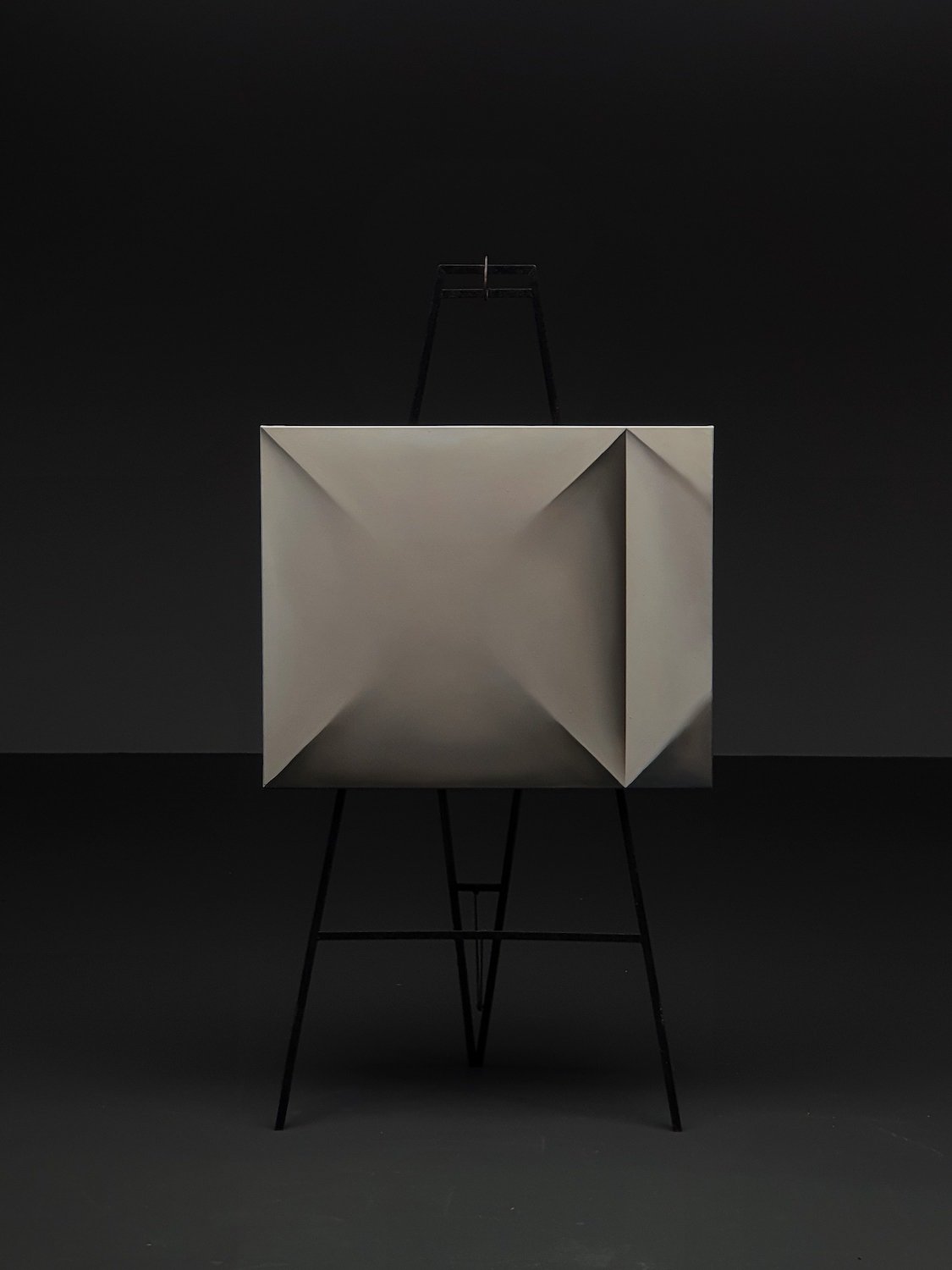Robert Suermondt:
Hole in the mirror
Many of Robert Suermondt's paintings – if not all – are based on this implicit contract: their image and our gaze upon them remain untethered, always shifting freely. The adhesion between both gaze and painting never becomes fixed, nor predictable, ruling out stagnation. Instead, only occasional stopovers offer a brief holdfast for our eyes to rest: at the edge of a vantage point or along the lines of a certain succession.
While our gaze – and our thoughts along with it – moves freely over Robert Suermondt’s paintings, it is constantly drawn to where momentum is unexpectedly reversed, stopped short, or tuned inside out. These visual paradoxes and pitfalls give depth and meaning to the image. ‘Form’ functions as a portal that will catapult you in any given direction.
the tireless attraction of rhythm
Viewing Robert Suermondt's paintings, one starts to hop on and off his playful interchangement of concavity and convexity. The rhythm is ever-changing as he extracts or multiplies his motives, without ever completely unifying them.
Indeed, the philosophical scope of Robert Suermondt’s paintings comes from ‘thinking in images’, not from ‘the image of a thought’. There is a tangible competition between perceptual experience and our irrepressible need to comprehend. The more meaning we add the more enigmatic the picture becomes, a tireless attraction calling for a resolution that never seems to be strictly situated in the materiality of the painting.
Original text: Benoit Dusart



